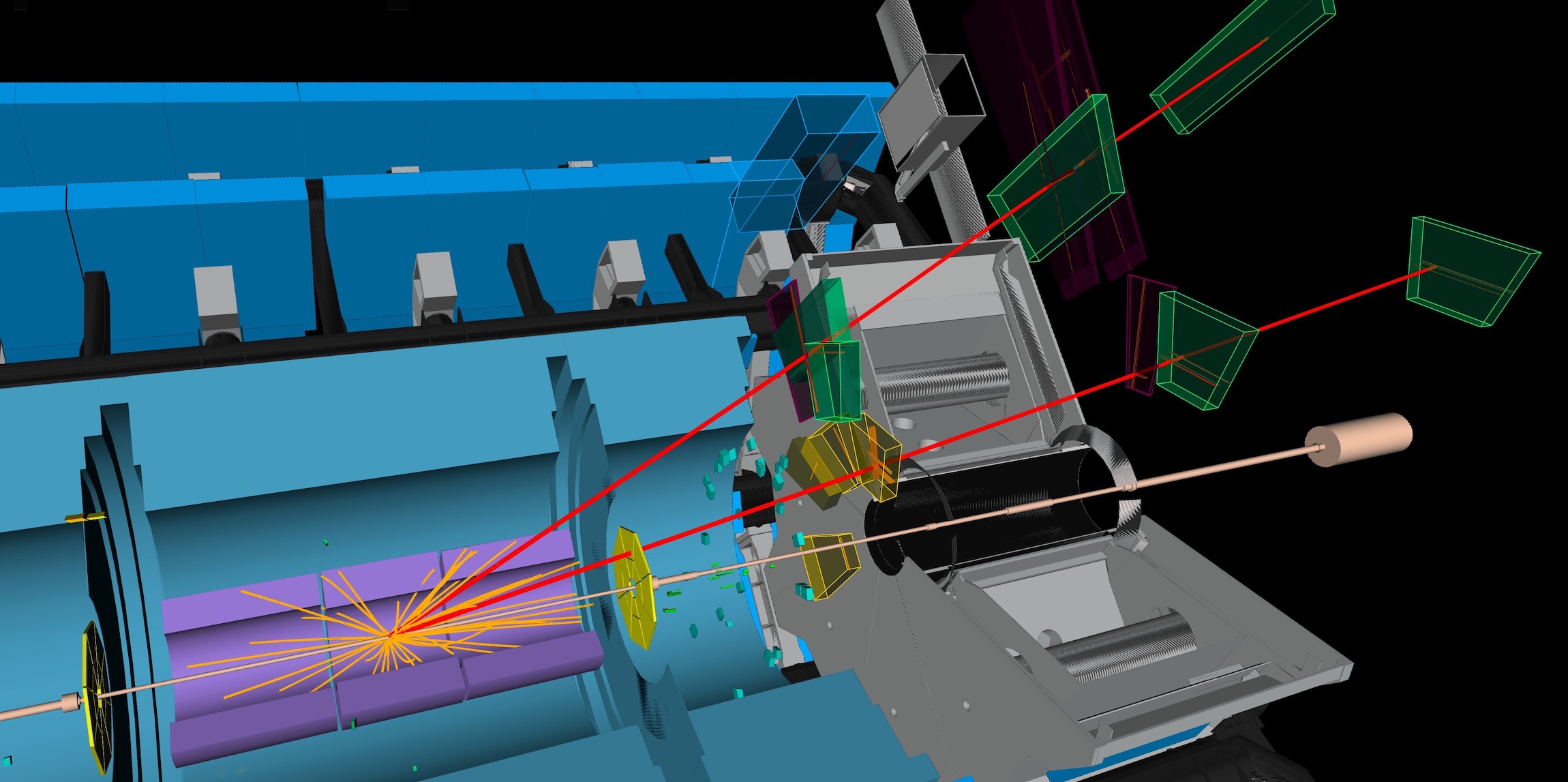ATLAS gains momentum in study of charmonium
10 October 2023 | By
In 1974, the discovery of the J/ψ meson sparked a revolution in particle physics (the “November Revolution”). Studies of this new, composite particle proved that more than three types of quarks existed and provided a cornerstone for the modern Standard Model of particle physics. However, almost 50 years on, there are still many unanswered questions about how J/ψ mesons are produced in hadron colliders like the LHC.
What is a J/ψ meson? In particle physics, bound states of a quark and an antiquark of the same type are collectively known as quarkonium. They are the QCD (Quantum Chromodynamics or the strong force) analogues of the hydrogen atom, with each new state corresponding to a different energy level. The bound states of charm quarks are known as charmonium, where J/ψ is the ground state of charmonium and ψ(2S) is the first excited state.
In high-energy collisions, charmonium states can be produced either from the short-lived QCD sources (“prompt” production) or from (relatively) long-lived decays of B-hadrons (“non-prompt” production). While theorists have a reasonable understanding of the latter production mechanism, they’ve yet to fully understand the production of J/ψ directly from the primary proton-proton interaction. This is a place where experimentalists can help shed light.
The ATLAS Collaboration has measured the production cross section of the J/ψ and ψ(2S) charmonium states across the widest range of transverse momentum so far.
The ATLAS Collaboration has measured the production cross section of the J/ψ and ψ(2S) charmonium states in terms of the transverse momentum and the rapidity (see Figure 1). For both states, they examined the widest range of transverse momentum so far, thus providing new input for theoretical models.
For their new result, ATLAS physicists examined the full LHC Run 2 dataset (collected 2015-2018), studying charmonium decays into a muon-antimuon pair. In order to cover the widest possible range of transverse momentum, physicists used different selection criteria (“triggers”) tailored to high- or low-momentum ranges. This is because, at high-momentum, it is much harder to distinguish two muons that are very close together from a single muon. Further, to distinguish between prompt and non-prompt production mechanisms, physicists looked at the position of the muon pair vertex with respect to the proton-proton collision point. This was independently examined at each momentum and rapidity interval in order to achieve the most precise result.
For both the J/ψ and ψ(2S) states, the cross-sections were measured separately for prompt and non-prompt production mechanisms. Results were compared to a number of theoretical predictions (Figure 2), which describe the data with varying degrees of success. The non-prompt fractions for each state were also measured, as well as the production ratios of ψ(2S) to J/ψ. In case of J/ψ, the results cover the rapidity range |y| < 2 and the transverse momentum range between 8 GeV and 360 GeV. In the case of ψ(2S), which is produced less abundantly, the rapidity range is the same but the transverse momentum range is only between 8 GeV and 140 GeV. In both cases, the transverse momentum range goes well beyond the values previously reached, which may help to discriminate between various existing theoretical models and possibly develop new ones, thus enhancing our understanding of QCD.








